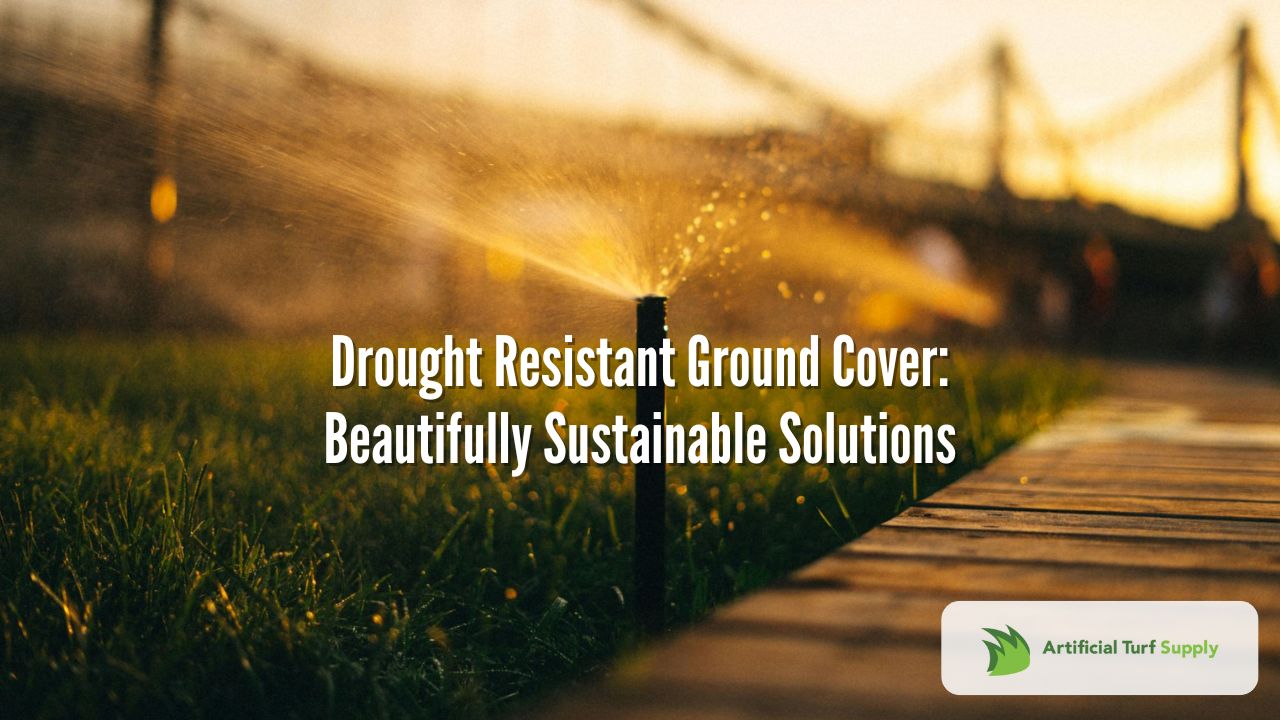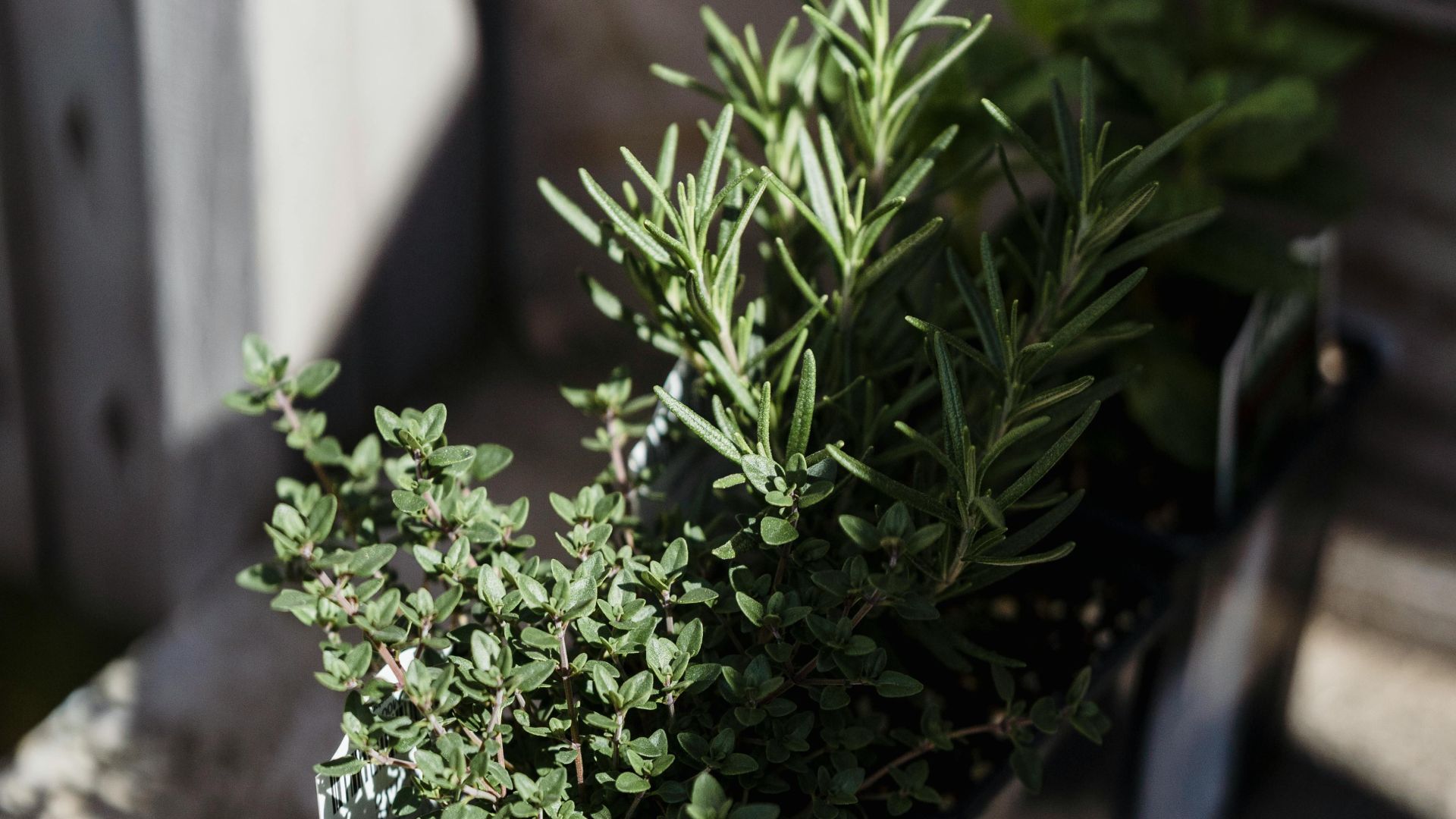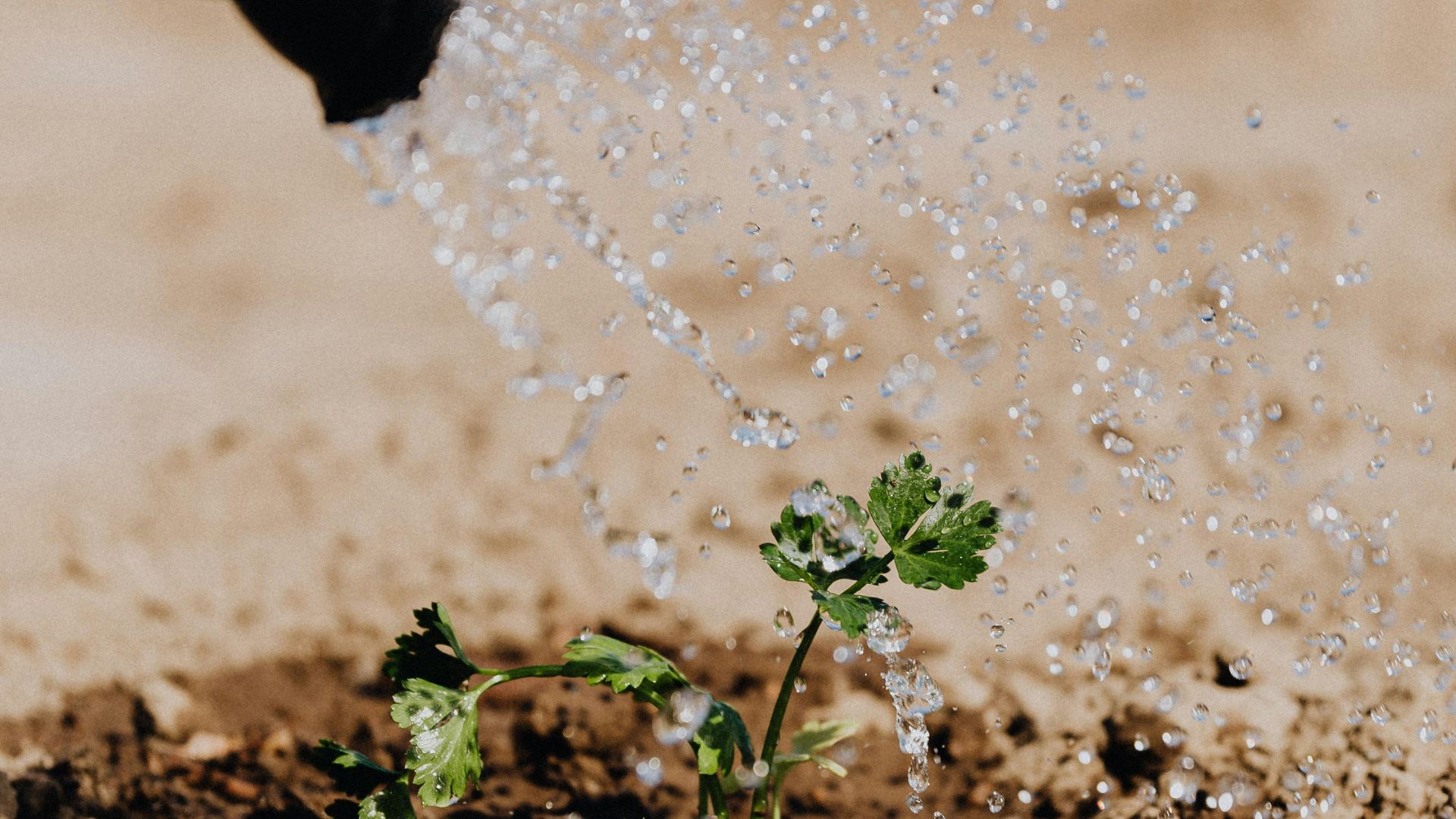If the headlines I’m seeing over the past few years are any indicator, drought resistant ground cover is a topic we all need to explore. Don’t get me wrong, I love a beautifully-manicured green grass lawn. There’s something so traditionally Americana about it. But across far too many states, water access is a huge, growing issue.
How do we tackle such a massive, complicated challenge? Well, maybe the best first step is leaning into what you know to help others. So today, I’m going to help you understand how you can create a beautiful landscape that uses less water and protects our topsoil.
What You Should Know About Resisting Droughts
-
- Drought tolerant ground covers are essential for gardens and landscapes in areas prone to dry summers. They save water while still providing attractive greenery.
- Popular drought tolerant ground covers include sedum, thyme, ice plant, rosemary, and artificial turf. Each has unique benefits in terms of appearance, growth habit, and maintenance needs.
- When establishing drought tolerant ground covers, it’s important to amend the soil with organic matter, mulch well, and provide deep watering the first year to help the plants develop extensive root systems. This enables them to withstand dry periods in future years with minimal supplemental irrigation.
- Choosing native, regionally-appropriate ground covers naturally adapted to your local climate is ideal for the most drought resistance. Plants from dry regions like the Mediterranean and American Southwest tend to have low water needs.
- Drought tolerant ground covers prevent erosion, suppress weeds, reduce maintenance compared to lawns, and provide visual interest with foliage colors and textures even when not in bloom. They are an eco-friendly landscaping choice, especially in areas with water restrictions.
The Importance of Drought Resistant Ground Cover
It’s the middle of summer. The sun is blazing. And your once-lush lawn is starting to look more like a scene from a spaghetti western. What do you do? You know the water restrictions are important. But you don’t want your yard to turn into a crunchy, brown mess. That’s where drought resistant ground covers come in like a superhero with a green thumb!
These hardy plants thrive in dry conditions. Meaning they’re used to getting far less water than traditional turf grass. Less irrigation means we waste less precious, precious water. Plus, there’s a huge range of attractive options. From foliage to flowers to attractice synthetic options. You don’t have to sacrifice style for sustainability.
Benefits of Drought Resistant Ground Covers
-
- Help prevent soil erosion
- Act as a natural weed barrier
- Low-maintenance, requiring minimal trimming or mowing compared to traditional lawns
- Offer a wide range of attractive foliage and flowers
- Conserve water by reducing the need for constant irrigation
So, drought resistant ground cover plants have jaw-dropping water-saving superpowers. But they also offer a host of other benefits. They help prevent soil erosion. This is especially important on slopes or in regions with heavy rainfall. They’re also a natural weed barrier. How happy would you be if you didn’t have to weed as often? I mean, count me in.
Many of these wonder-plants are also low-maintenance. You’ll need to do less trimming or mowing than with traditional lawns. This means more time for you to sit back, maybe watch that new show you’ve been eyeing as you chill in your water-saving yard. And let’s be honest, who doesn’t love a garden that practically takes care of itself?
Types of Drought Resistant Ground Covers
-
- Sedum (stonecrop)
- ‘Angelina’ – tiny, bright green leaves
- ‘Dragon’s Blood’ – purple-tinged foliage
- Thyme – fragrant foliage and delicate flowers that attract pollinators
- Ice plant (Delosperma) – vibrant carpet of daisy-like flowers in shades of pink, purple, and orange
- Creeping thyme – low-growing herb that forms dense mats of fragrant foliage
- Rosemary – low-growing herb that forms dense mats of fragrant foliage
Now, let’s talk about some of the stars of the drought resistant ground cover world. Sedum is known as stonecrop. It’s a personal favorite of mine. These succulent plants come in a variety of colors and textures, from the tiny, bright green leaves of ‘Angelina’ to the purple-tinged foliage of ‘Dragon’s Blood.’ They’re practically indestructible. They thrive in poor soil and laugh in the face of drought.
Thyme is another winner. It has fragrant foliage and delicate flowers that attract pollinators. Bonus, you can cook with it. Snip a few sprigs to add some fresh flavor to your dinner tonight. That’s called multi-tasking right there.
If you crave a pop of color, ice plant (Delosperma) is a show-stopper. These South African natives burst into a vibrant carpet of daisy-like flowers in shades of pink, purple, and orange. You’ll love them in rock gardens, slopes, or spilling over the edges of containers.
Joining thyme as a coverage-cooking-combo is rosemary. Both of these low-growing herbs form dense mats on the ground. They’re perfect for filling in gaps between stepping stones or creating a living mulch beneath taller plants. Plus, both will fill your outdoor space with wonderful smells.
Artificial Turf: A Drought Resistant Alternative
Okay, I can already hear some of your objections. “But, I love the look of a lush, green lawn! Isn’t there a way to have that without all the water waste?” I hear you, and I even have a solution. Artificial turf: a surprise contender in this drought resistant ground cover competition.
-
- Improved Drainage
- Mud-Free
- Quick Drying
- Usable surface during or after rainfall without creating a mess
- Ensures a clean, mud-free area
Let me start by saying that today’s artificial turf is a far cry from the unnatural version we used to see. The technology has changed, folks, and synthetic grass now looks and feels more like the real thing than ever before. It’s soft. It’s durable. And you can get different blade lengths and colors to suit your landscape style.
No watering, mowing, or fertilizing here! This is your best low-maintenance option. High-traffic areas? No problem. Pet-friendly? Definitely. What if you just want a flawless lawn without the fuss? 100%! Plus, it can save you a ton of money on your water bill over time! Use our Artificial Turf Savings Calculator to see how much money you’ll save on water and maintenance when you switch to artificial grass.
Selecting the Right Ground Cover for Your Region
Of course, not all drought resistant ground covers are created equal. When choosing the right plants for your landscape, it’s important to consider your specific climate and soil type. What thrives in the arid Southwest may not be the best choice for the humid Southeast, and vice versa.
One of the best ways to ensure success is to choose native, regionally-appropriate ground covers that are naturally adapted to your local conditions. These plants have evolved over time to thrive in your area’s unique ecosystem, making them the most drought resistant and low-maintenance options.
Planting and Care Tips
- Prepare your soil
– Remove any existing weeds or grass
– Amend the soil with organic matter like compost or well-rotted manure - Space your ground covers according to their mature size
- Water deeply and regularly during the first growing season
- Mulch newly planted ground covers
– Use a natural, organic mulch like shredded bark or pine straw
– Apply a 2-3 inch layer around your plants
– Keep mulch a few inches away from the base of the plants
Once you’ve selected your dream team of drought resistant ground covers, it’s time to get planting! To give your plants the best chance at success, start by preparing your soil. Remove any existing weeds or grass, and amend the soil with organic matter like compost or well-rotted manure. This will help improve drainage and provide nutrients for your new plants.
When planting, be sure to space your ground covers according to their mature size, allowing room for them to spread and fill in over time. Water them deeply and regularly during their first growing season to help them establish strong root systems. Once established, most drought resistant ground covers will require minimal supplemental irrigation, except during prolonged periods of drought.
Mulching your newly planted ground covers can also help retain moisture and suppress weeds. Use a natural, organic mulch like shredded bark or pine straw, applying a 2-3 inch layer around your plants. Just be sure to keep the mulch a few inches away from the base of the plants to prevent rot.
Inspiration and Design Ideas
Now that you’re armed with all this knowledge, it’s time to get creative! Drought resistant ground covers offer endless possibilities for stunning, sustainable landscape design. Here are a few ideas to get your gears turning:
- Create a tapestry of textures: Combine different types of ground covers with varying leaf shapes and sizes for a dynamic, visually interesting display. Think soft, feathery ‘Elfin’ thyme interspersed with the bold, fleshy leaves of ‘Angelina’ sedum.
- Play with color: Many drought resistant ground covers offer vibrant flowers or foliage in shades of purple, pink, yellow, and orange. Use them to create a colorful border along a walkway, or mass them together for a stunning, low-maintenance flower bed.
- Mix and match: Don’t be afraid to combine drought resistant ground covers with other water-wise plants like ornamental grasses, succulents, or native shrubs. The contrast in heights and textures can add depth and dimension to your landscape.
- Go vertical: Some drought resistant ground covers, like creeping thyme or rosemary, can even be used to create a living wall or vertical garden. Plant them in a hanging basket or trough, and watch as they spill over the sides in a cascade of fragrant foliage.
The Bottom Line
You should feel great about becoming a proactive student on drought resistant ground cover issues and practices. I mean, water conservation issues and concerns aren’t going away anytime soon. That doesn’t mean we can’t fully enjoy beautiful AND eco-friendly backyards.
At Artificial Turf Supply, we love to explore all things plants, but we’re even more excited to put our synthetic turf experience to work for your water conservation landscaping goals. So give us a call at (877) 912-7866. Or hop over our site! We hope to hear from you soon.
Request a free artificial grass quote to start your project today!





